
Public Security Bureau officers seen at the Jokhang Square in Lhasa on March 10, photographed by tourists.(Photo: http://steve.ulrike.stivi.be/english/list.php?LijstNr=2&Item=55)
BEIJING, March 15 -- Chinese armed police flooded into the streets of the Tibetan capital Saturday to smother the riots that have destroyed scores of Chinese-owned businesses in Lhasa and killed 10 people by the government's count. Officials demanded that the rioters surrender by midnight Monday, while shopkeepers cowered in their stores and tourists fled the city.
Lhasa, a renowned tourist destination sitting high on a Himalayan plateau, was generally quiet a day after the violence, according to official reports and tourists and residents contacted by telephone. The armed patrols tightly controlled traffic in the center city and sealed off the Buddhist monasteries that have traditionally been centers of anti-Chinese sentiment, they said. 'The have closed Lhasa down,' said David McGhie, 49, a British tourist who arrived in Lhasa by train at the height of the rioting Friday afternoon and planned to leave as soon as possible. 'Clearly, we're not going to see Lhasa.' With travel and reporting tightly restricted by Chinese authorities, it was impossible to verify reports of sporadic violence that were ricocheting around the Internet and through telephone calls, particularly among thousands of Tibetans who are in exile to escape Chinese rule.
Local authorities pledged a harsh crackdown, risking China's attempt to shine as host of the 2008 Olympic Games in August. After days of silence about the escalating protests in Lhasa, the state-controlled media launched extensive coverage. Chinese television broadcast videos of the riots and identified protesters as violent saboteurs. Local officials offered rewards for informers and warned residents that anyone caught with a protester in their home would be punished.
The violence not only muddied China's 'one world, one dream' Olympics image, but also overshadowed what China had hoped to be the big news of the day -- President Hu Jintao's official reelection as president and the ascension of his likely successor, Xi Jinping, who was named vice president by the Communist Party-controlled legislature.
Xi's first job is overseeing the management of the Olympic Games.
Although the rioting in Lhasa subsided, a struggle ensued over public perceptions of what caused the protests that began Monday and their significance for China's role as an Olympic host. A regional government official defended police actions on Friday. He said that the police had not fired their weapons but rather had rescued more than 580 people, including three Japanese tourists, from burning buildings. He said many of the 10 dead were business owners who burned to death when their shops were set ablaze. He said Lhasa was not under martial law.
Chinese leaders urged Lhasa residents to 'support the government's crackdown on all forms of criminal activity.' A spokesman for the Olympic organizing committee said the violence would not deter plans for the Olympic torch to be carried over the crest of Mt. Everest and into Tibet.
Activists and Tibetan exiles today were scrambling to confirm accounts of dead and wounded monks and supporters, in the aftermath of Friday's violence. They were also seeking information on dozens, perhaps hundreds, of protesters who had been arrested.
Exiles in India said that 49 Tibetans who tried to organize a march in Shikatse, Tibet's second-largest city, were arrested Saturday morning. Another 44 exiles in India set off on a protest march to Tibet, after a group of 102 marchers were detained by Indian authorities Friday.
Tibetan activists predicted that whatever happens now in Lhasa, protests against China's rule over Tibet would continue to pressure China to change its hard-line policies. 'For Tibetans outside, it's like the top has blown off the pot,' said Lhadon Tethong, a spokesman for Students for A Free Tibet in Dharamshala, India. 'There's been a small crack in the window and now we must push for change.' The Chinese government depicted the violence as the result of a plot by supporters of the Dalai Lama, who has been in exile in India since 1959 after leading a failed uprising against Chinese rule. According to Tibetans, the protests are a reaction to China's increasingly repressive policies, which are undermining Tibetan culture and religion while exploiting its people and land. 'Tibetans are experiencing severe economic marginalization,' said Kate Saunders, communications director for the Washington-based International Campaign for Tibet. Nomads, who once grazed livestock on grasslands that make up 80 percent of the vast region, are being resettled into farming communities while their land is 'literally taken from under their feet.' In the cities, the situation is particularly acute, as Chinese set up business operations and hire other Chinese as employees. Even in the square outside the 1,400-year-old Jokhang temple, traditional Tibetan scarves are sold by Chinese traders, she said.
Tibet has 2.8 million people, 95 percent of whom are Tibetan and other non-Chinese ethnic groups.
Tensions in Tibet have been rising during the past two years, after Beijing built a railroad line to Lhasa and thousands of Chinese migrants and business people streamed into Tibet.
Meanwhile, local Chinese officials severely restrict traditional Buddhist practices and their virulent attacks on the Dalai Lama fuel widespread resentment among Buddhists, Saunders said. 'The Chinese are out of step with the rest of the world with their hostile attacks on the Dalai Lama,' she said. The United States and other countries have urged China to open a dialogue with Dalai Lama on Tibet's future.
Without the Dalai Lama's involvement, Saunders sees no end to the conflict. 'The hardest thing for the Chinese to do is to accept that these concerns are genuine and are not going to go away,' Saunders said. 'The Dalai Lama has a pretty good image in the West,' agreed a Chinese researcher in Beijing, who spoke on condition of anonymity because of the sensitivity of the topic. 'The Chinese government has been made to look evil on the Tibet issue, so it is pointless for the government to try to explain anything to the international community.'
Rama Lakshmi in New Dehli and researcher Zhang Jie in Beijing contributed to this report.
Washington Post
http://www.savetibet.org/news/newsitem.php?id=1218Statement by the Dalai Lama on protests in Tibet

I am deeply concerned over the situation that has been developing in Tibet following peaceful protests in many parts of Tibet, including Lhasa, in recent days. These protests are a manifestation of the deep-rooted resentment of the Tibetan people under the present governance.
As I have always said, unity and stability under brute force is at best a temporary solution. It is unrealistic to expect unity and stability under such a rule and would therefore not be conducive to finding a peaceful and lasting solution.
I therefore appeal to the Chinese leadership to stop using force and address the long-simmering resentment of the Tibetan people through dialogue with the Tibetan people. I also urge my fellow Tibetans not to resort to violence.
THE DALAI LAMA
Choques en el Tíbet dejan 30 muertos

Una manifestante lucha con las autoridades, que tratan de quitarle una bandera, en esta imagen de video de APTN.
China ordenó el sábado la salida de los turistas de la capital del Tíbet, mientras soldados a pie y en vehículos blindados patrullaban las calles y aplicaban un estricto toque de queda, un día después de disturbios que, de acuerdo a un grupo de exiliados tibetanos, han dejado por lo menos 30 manifestantes muertos.
Las protestas iniciadas el lunes contra el régimen chino en el Tíbet son las más numerosas y violentas en la región en casi dos décadas. Se han propagado a otras zonas de China, como también a las vecinas Nepal e India, entre otros países.
En Nueva York, la policía se enfrentó a manifestantes en las afueras del consulado chino, durante una protesta en su mayor parte pacífica de tibetanos.
Los detalles de la confrontación no estaban claros aún, pero varios agentes y manifestantes resultaron heridos, según la policía y testigos. Había pedazos de vidrio en la calle y las autoridades hicieron varios arrestos.
Un organizador de la protesta, que prosiguió pacíficamente, dijo que el breve choque ocurrió cuando integrantes de un piquete lanzaron piedras contra el consulado.
En Washington, unos 80 manifestantes congregados ante la embajada de China agitaron banderas tibetanas y corearon lemas contra la ocupación china y la violenta represión policial en el territorio.
El gobernador chino en el Tíbet prometió castigar a los manifestantes, mientras las autoridades policiales chinas los instaban a entregarse para el martes o enfrentar castigos no especificados.
Las protestas comenzaron en el aniversario de un levantamiento en 1959 contra el régimen chino en el Tíbet.
Durante los siglos, Tíbet formó parte en algunas épocas de los imperios dinásticos chinos. Las fuerzas comunistas invadieron y se apoderaron de la región en 1950.
Igualmente el sábado, la policía disolvió una manifestación de apoyo a los nacionalistas tibetanos en la provincia occidental china de Gansu. Hubo otras con el mismo fin en Australia, la India y Nepal.
Las calles de Lhasa estaban ayer mayormente vacías debido al toque de queda. Testigos oculares dijeron que la policía patrulla las calles bastón en mano mientras siguen humeando los incendios causados el viernes. Las informaciones sobre detenciones y muertes han variado y no pudieron ser confirmadas de forma independiente.
La agencia noticiosa oficial china Xinhua dijo que 10 personas -- entre ellas dos empleados de un hotel y dos propietarios de comercios -- murieron quemados. Añadió que 12 policías fueron heridos. El gobierno tibetano en el exilio que dirige el Dalai Lama dijo que había confirmado la muerte de al menos 30 personas y que tenía informes no confirmados de hasta 100 muertos.
El Nuevo Herald
http://www.elnuevoherald.com/167/story/175711.html







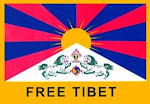







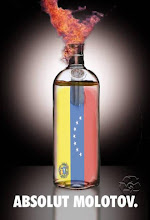

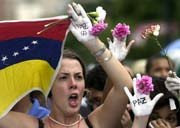

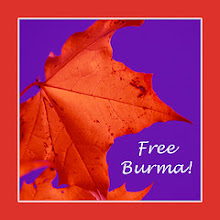

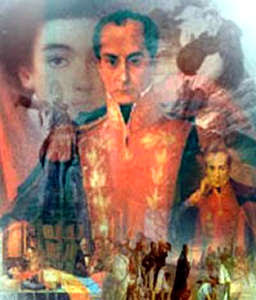
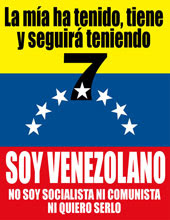
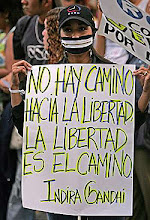





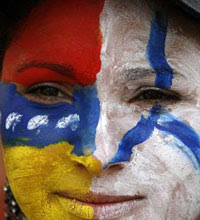







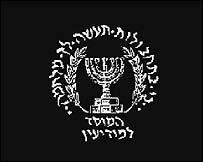








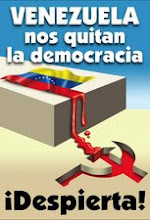









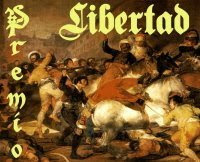



















No hay comentarios:
Publicar un comentario